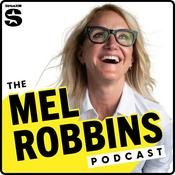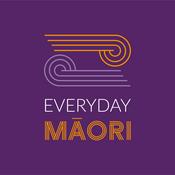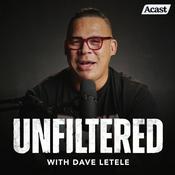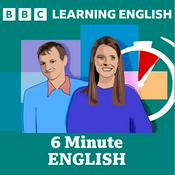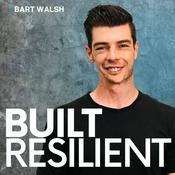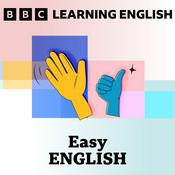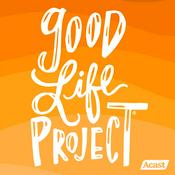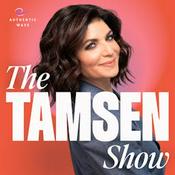68 episodes

Inspirational books, films, and tools for teachers
18/8/2025 | 6 mins.
To wrap up season 4, educators share books, films, and tools to inspire other teachers, students, and learning communities at the start of the new school year. Nina shares some highlights in the episode, and the full list is below. Thank you to everyone who sent in their recommendations.BooksIn the Small Places: Stories of Teacher Changemakers and the Power of Human Agency by Fred Mednick, recommended by Katharine Young.Reaching and Teaching Children Who Hurt: Strategies for Your Classroom by Susan E. Craig, recommended by Trinidad Arellano. Braiding Sweetgrass: Indigenous Wisdom, Scientific Knowledge and the Teachings of Plants by Robin Wall Kimmerer, recommended by Rosina Dorelli.The Hidden Balance of Things: Family constellations, shamanism, and other ways to prevent our extinction by Guillermo Leone, recommended by Rocio Garcia SolcaSchools That Learn: Fifth Discipline Fieldbook for Educators, Parents, and Everyone Who Cares about Education by Peter Senge, recommended by Carlos Chiu.Creative Schools: The Grassroots Revolution That’s Transforming Education by Ken Robinson, recommended by Joanna Marriott.Another Way Is Possible: Becoming a Democratic Teacher in a State School by Derry Hannam, recommended by Richard Fransham.The Secret of Spinoza by Jose Rodrigues dos Santos, recommended by Ingrid Delange.Films and videosSpare Parts, recommended by Carlos Chiu. Lunana: A Yak in the Classroom, recommended by Trinidad Arellano. Suvemae: Pioneer of Possibility, recommended by Richard Fransham.The Boy Who Harnessed the Wind, recommended by Katharine Young.The Story of Stuff and the original, recommended by Rosina Dorelli.Kiss the Ground, recommended by Rocio Garcia Solca.The Literacy Shed, recommended by Silvana Gili.Hichki, recommended by Meesha Arora.Find the rest of the recommendations on BOLDGuestsKatharine Young: LinkedInTrinidad Arellano: LinkedIn, InstagramRosina Dorelli: LinkedInCarlos Chiu: LinkedInRichard Fransham: LinkedInMeesha Arora: LinkedInToyin Awofeso: LinkedInAtukunda Samuel: LinkedInJoanna Marriott: LinkedInJoin the Teachers’ Voices WhatsApp group and read the community guidelines.

When teachers match instruction to individual learners
04/8/2025 | 28 mins.
In what ways do students vary? How can teachers take account of variability when students develop at different paces and across different dimensions of learning?In this episode, Nina speaks with Sarah Bichler, Associate Professor of Psychology at the University of Passau in Germany. Sarah says children grow and learn in different ways, sometimes steadily, sometimes through abrupt shifts. Recognizing individual learning timelines allows teachers to “design the instruction that matches the learner’s developmental stage”.Nina then hears from Meesha Arora, an economics teacher at an international school in New Delhi, India. Meesha sees students' confidence, analytical skills, and academic performance change over time with guidance, one-on-one attention, and use of AI in formative assessment. For Meesha, differentiating instruction is important because students come from different curricula and places. “I often spend the first six months just getting to know the child a little bit better”, she says, so she can cater to them.Finally, Nina speaks to Karmen Linnamägi, a music therapist and primary school teacher in Estonia. Karmen works with children with intellectual and developmental disabilities and uses participatory, creative teaching methods. Children “might have hidden skills and capacities, which suddenly at certain particular moments reveal themselves”, she says. Join the Teachers' Voices WhatsApp group and read the community guidelines.GuestsSarah Bichler: LinkedIn Meesha Arora: LinkedInKarmen Linnamägi: Facebook

How teachers and families can support adolescents together
21/7/2025 | 26 mins.
What role do families play in children’s learning as they grow into adolescence? How can teachers build partnerships with parents and caregivers? What happens when schools work with families?In this episode, Nina speaks with Elisabetta Aurino, Associate Professor of Economics at the University of Barcelona in Spain. Elisabetta shares findings from her research in Ghana showing how caregivers can support their teens, even with limited resources. She discusses why some parents hold back from getting involved and how teachers can communicate with empathy. “Parents still remain the main factor driving the children's learning and development, especially in the early adolescent years”, Elisabetta says.Nina then hears from Shereen Abdullah, who teaches language and literature at an IB school in Cairo, Egypt. She specialises in supporting students with special educational needs. Shereen says that consistent, open communication between parents and schools can impact a student’s learning experience. Shereen says that just “a 10-minute talk with their parents on a daily basis” can help a student be well-rounded.Next, Nina hears from Wendy McKenzie and Cheryl McKenzie, sisters with extensive teaching experience in Trinidad, the USA, and beyond. Wendy, who teaches at an all-boys secondary school in Trinidad, shares stories of deep parental engagement, from project mentoring to guidance sessions led by parents. She says that “those boys whose parents have been present in school, they are usually the boys who excel at school”.Cheryl, a middle school teacher, tells Nina that parental involvement evolves as children mature. They can offer strategies to support teenagers’ emotional and social development alongside their academic growth. “We should have talks with parents encouraging them to be there for their child socially, be there for their child academically,” Cheryl says.Join the Teachers' Voices WhatsApp group and read the community guidelines. GuestsElisabetta Aurino: LinkedInShereen Abdullah: LinkedIn, InstagramWendy McKenzie: BOLD profileCheryl McKenzie Eugene: Facebook

How schools can value the strengths children gain from adversity
07/7/2025 | 21 mins.
How can educators recognise and build on the strengths children gain from adversity? What happens when teachers shift from seeing deficits to seeing potential? How are children changing their own narratives with the support of educators?In this episode, Nina explores children’s resilience and the strength they gain from living in difficult circumstances.Nina first speaks with Gabriele Paone, a researcher in Oxford in the UK who studies how children in high-stress environments in different parts of the world develop strengths that are often overlooked. Gabriele focuses not on what students lack, instead recognising how they adapt, cope, and grow in the face of adversity. “Shifting from a deficit perspective to an adaptive one encourages educators to see potential strengths in differences”, Gabriele says.Nina then speaks with Murimi Nyaga, known as Turi, a teacher and Teach For Kenya fellow working in Machakos, Kenya. Turi teaches in a rural community where students face family hardships, poverty, and emotional challenges. Despite this, he has seen students thrive when given support and creative outlets. Through projects like arts and music, children are building confidence and discovering hidden talents. “The learners that have been engaged in the project have gained esteem”, Turi says. “They're able to take up responsibilities. They're able to take up leadership in the school.”Finally, Nina talks with Gilson Penha, a teacher and coordinator in Rio de Janeiro, Brazil. Gilson works in schools that serve neighbourhoods impacted by inequality and violence. Gilson developed a story with Turi’s students about a young warrior who uses a magical spear to free his people from oppression. This story helped his students see themselves as protagonists of a story of change. “I really believe that education can change the social context within our neighborhood, within our community”, says Gilson.Join the Teachers' Voices WhatsApp group and read the community guidelines.Guests Gabriele Paone: WebsiteMurimi Nyaga (Turi): LinkedInGilson Penha: Instagram

Tips for teaching in difficult conditions
23/6/2025 | 6 mins.
How can teachers support students in emergencies or difficult contexts? In this bonus episode, Nina hears advice for teaching in challenging conditions from four educators.First Nina meets Diana Suárez, a teacher in Colombia and an expert in multilingualism and multiculturalism. Diana says that safe play spaces let children reconnect, express themselves, and feel joy again.Next, Nina speaks to Gilson Penha, who teaches in a public school in Rio de Janeiro, Brazil. Gilson believes in building a welcoming school environment to support community involvement and hands-on, real-life activities that keep students motivated.Murimi Nyaga, known as Turi, is a middle school teacher from Machakos, Kenya. He tells Nina about connecting students with nature through school gardens and conservation projects. These experiences help students develop a sense of belonging and purpose, even if they struggle academically or face difficult home lives.Finally, Nina meets Antonio Castillo, a recent graduate from Spain, who works in afterschool programs for youth at risk of dropping out. He builds trust through authenticity and humility. By letting his students teach him first, he is able to truly connect.Join the Teachers’ Voices WhatsApp group and read the community guidelines.Guests and resourcesDiana M. Suárez: LinkedInGilson Penha: InstagramMurimi Nyaga (Turi): LinkedInAntonio CastilloTeachers Without Borders: website
More Education podcasts
Trending Education podcasts
About Teachers' Voices
Listen to Teachers' Voices, The Mel Robbins Podcast and many other podcasts from around the world with the radio.net app
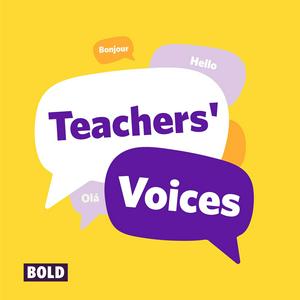
Get the free radio.net app
- Stations and podcasts to bookmark
- Stream via Wi-Fi or Bluetooth
- Supports Carplay & Android Auto
- Many other app features
Get the free radio.net app
- Stations and podcasts to bookmark
- Stream via Wi-Fi or Bluetooth
- Supports Carplay & Android Auto
- Many other app features


Teachers' Voices
download the app,
start listening.
